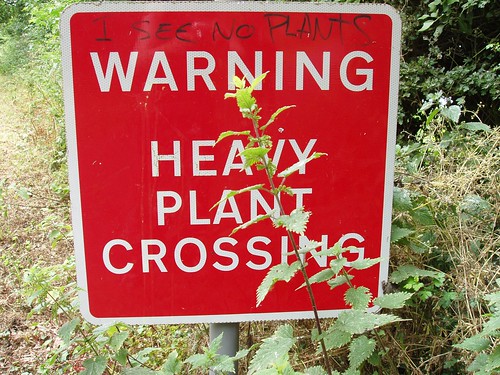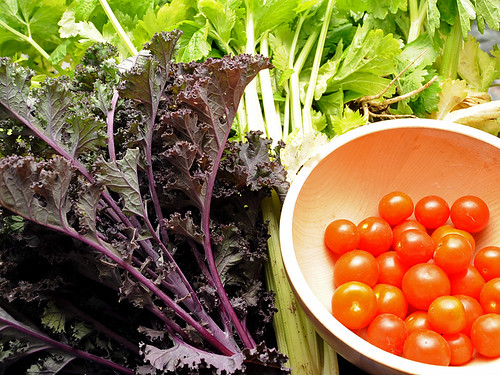What are you planting in your vegetable garden?
There are so many choices – Countless cucumber varieties, gobs of green beans, hoards of herbs, limitless lettuce, a plethora of peppers, tons of tomato varieties, zillions of zucchini, and multitudes more. The colors are an artists palette and the earth your canvas.
This is 2013, when I was a child my grandfather had a modest vegetable garden; all of the neighbors had their own vegetable garden or orchard themselves. When I was young, the vegetable garden was the garden; the orchard was the orchard and the landscape? Well, it just wasn’t a major topic of conversation. I remember very vividly, running through my grandfathers back lawn, racing my sister, our destination? The sweetest Raspberry patch you could ever hope to meet. The raspberries were as big as golf balls! (Remember everything is absolutely huge when you are a child, the halls in your elementary school seem never ending, a minute is a million years and the store your parents keep telling you is right down the block, Ha, your no dummy, it takes half a day to get there). So, there was this raspberry patch, Oh wait, there was also this delicious cherry tree, I cannot forget the apple tree, the grapevines, rhubarb, mulberries, blackberries, strawberries, bringing back any memories? Those were the days…I say this to advise you; we remember those days and today is a new day. Today is a day of freedom in gardening. You do not have room for a vegetable garden? – Use decorative pots on the patio, balcony, sunroom, kitchen, and the back steps, vertical garden. There is really no excuse to not have a garden of some sort, unless…you do not like fresh, homegrown, non-chemical marinated produce.
Tip # 1 you do not need much space to grow your own food.
You’re planting your garden, vegetables, annuals, perennials, shrubs, trees, etc. Many of you have asked me how you should plant your new additions to the garden – and I will tell you – with care. Remember the piece of string question we talked about a few months ago? Someone asks you a vague question that you could not possibly answer considering the lack of information – your response? How long is a piece of string? Each plant may or may not have a particular process it needs to go through in order to have the best chance of a thriving life in its new home. To answer this question in a general sense
- Dig the hole out twice as wide as the pot or root ball.
- Use a soil amendment such as Sweet Peet to amend the planting hole
- Place your plant in the excavated hole so when you back fill – the soil line of the root ball is level or slightly higher than, the existing soil line.
- Fertilize your planting with Holly tone for acid lovers, Plant tone for neutral soils, Dr. Earth fertilizer if you want to introduce beneficial organisms back into the soil or Osmocote if you are always in a hurry.
- Add a mulch ring to help keep the root system cool in the heat of the summer and mulch will also help the root system retain moisture for better root establishment. Keep your mulch at least 2-3 inches away from the trunk, stem or other plant tissue
- Water your new planting in thoroughly, you will want to water less often in longer durations to promote a healthy root system. For container plants, water once every three days unless it rains heavily, (if it rains, go three days from the rainfall). Repeat this for three weeks. Continue to water once a week if it is dry this summer. If your new planting is ball and burlap you will want to water it once a week, unless there is a heavy rainfall, repeat for three weeks unless the summer is dry.
- You will want to water your vegetable garden daily, making sure you are consistent especially with your tomatoes – they are sensitive to your watering schedule.
Check out this link to Dayton Nurseries website to calculate how much product you will need for your garden task.
http://www.daytonnursery.com/tips/Mulch%20Calculator.htm
Also check out their Sweet Peet Link
http://www.daytonnursery.com/tips/Sweet_Peet.htm
On a final note, I have some strong feelings I want to express about a question I was asked and a story I was told by a couple who just acquired a very whimsical new home, which has been perfectly placed in a wonderland like forest setting. They found this home in the fall, inspected it in the fall and acquired it in the winter. Simply put, they had and have no idea what awaits them, lurking in that wonderful woodland setting this year. Kind of like Forest Gump and his box of chocolates, only these surprises are not palatable. Surprise #1 and the root of the question asked, they are virtually swimming in poison ivy.
Upon a conversation with a friend they were told to eat the poison ivy in order to create immunity to it. Are you kidding me? Yes, I have been told, only twice, in the past of stories that include bread and poison ivy leaves. Whoever you are – I am so proud you are able to eat a highly toxic plant that has been known to kill many people in the past young and old alike – though, I beg of you, please do not encourage others to follow your peculiar cravings. I do not believe poison ivy is safe to eat, I will never believe it is safe to eat and I implore you to not try to eat it! Poison ivy is a tenacious plant and if it weren’t for its wicked ways we might be able to enjoy it in the landscape for those hard to cover areas – the birds sure do enjoy it.
How do you get rid of it? There are many products on the market that boast the eradication of it, there are also many herbicides that will help keep it at bay a bit, though nothing works as well as good old fashion man power. Pick a cool day, cover yourself and wear gloves, pull the poison ivy out gently as to not bruise the tissue and release the oils. Do not add it to your compost! DO NOT BURN IT! Do not give up! Do not forget to wash your clothes in HOT SOAPY water, or you will be one of the ones calling me telling me you have poison ivy all over you and it is spreading. Ask your doctor, poison ivy does not spread from where you contacted it on your skin, however, it does spread from where it has contacted your clothes or a hand tool. So pay attention, which is smarter, you or the poison ivy?






